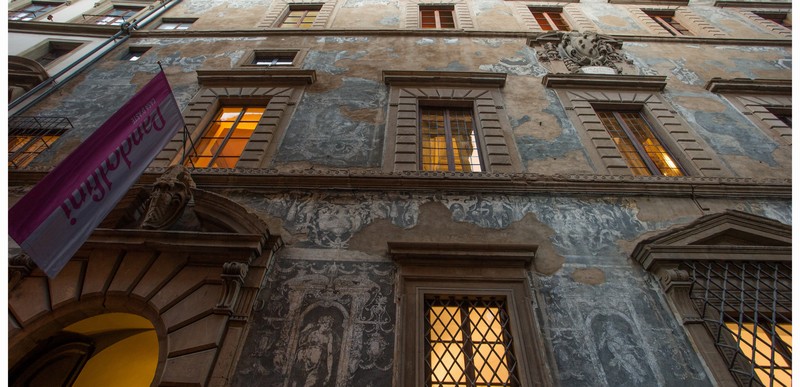
Palazzo Ramirez Montalvo
The Palazzo Ramirez Montalvo is a magnificent building with a particularly rich historical and artistic heritage. In 1558 it was purchased by Antonio de Montalvo, a favourite of Cosimo I De Medici.
Antonio Montalvo, after acquiring several small house adjoining the Palazzo, commissioned Bartolomeo Ammannati to create a single façade from the buildings. This façade, thought to have been reworked by the young Poccetti, can still be admired today with its graffito frescoes attributed to Vasari. The Ramirez family owned the Palazzo for three centuries until the middle of the nineteenth century, when the family died out.
Towards the middle of the last century the Pandolfini auction house bought part of the Palazzo as the seat of its head office. Like many historic Palazzos in the centre of Florence, the different styles visible in palazzo Ramirez-Montalvo bear witness to the many restorations it has undergone over the centuries. It is mainly in the rooms of the piano nobile that the greatest masterpieces decorating the building can still be admired.
Good examples of these masterpieces are the magnificent carved and painted wooden coffered ceiling, where the coats of arms of aristocratic families are prominent, and the large fire-place in pietra serena, executed by Francesco Parigi at the beginning of the seventeenth century. Painted on the fire-place is a large coat of arms, probably produced by the work-shop of Pier Dandini before 1630.
Among the interesting guests that have passed through this ancient palazzo, mention mention should be made of the great seventeenth-century archaeologist, Johann Joachin Winckelmann who at the time was compiling a complete catalogue of Baron Filippo de Stosch's gem collection. In the nineteenth century the palazzo underwent further improvements and restorations which can nowadays still be admired in the rooms of the piano nobile, where between 1815 and 1820 the painter Luigi Catani (1762-1840) frescoed the ceilings with allegorical and mythological figures.
Call us now at
+39 055 2340888
Send us an email at
info@pandolfini.it
